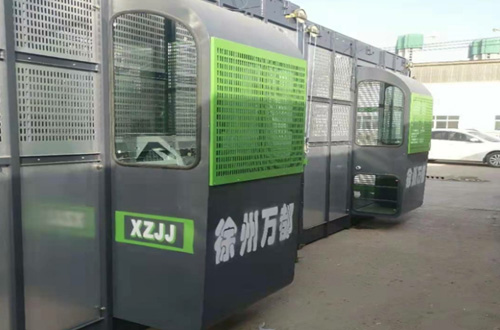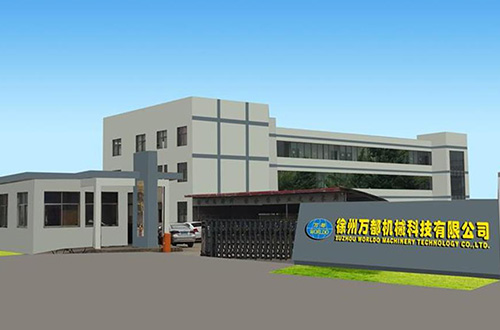Preparation before installation
1 The installation site should have sufficient power supply, and must be equipped with a power box dedicated to the elevator. Each cage should be controlled by a switch. The current of the power supply fuse should be referred to the elevator performance parameter table;
2. The dedicated power box on the construction site should be directly introduced from the transformer room on the construction site, and the distance should not exceed 25m. Generally, one cable is used, or each cage can be connected by one cable. The cable section specification is larger than that of the main cable of the cage. One size bigger. If the distance exceeds 25 meters, the cross-sectional area of the cable should be appropriately increased;
3. Appropriate lifting equipment and installation tools should be available
4. There should be roads and sites for transporting and stacking elevator parts;
5. The user should make the basis as required
6. Determine the connection plan between the attached wall frame and the building, and prepare embedded parts or fixed parts as needed
7. According to user needs, bring your own platform accessories, such as bridge boards, safety railings, platform landing doors, etc.
8. According to relevant regulations and requirements, set up a grounding device to ensure that the grounding resistance is not greater than 4Ω;
9. According to relevant regulations and requirements, the maximum deviation of the site power supply voltage is ±5%, and the power supply is not less than the total power of the motor
10. If the construction site is powered by a generator, it must be equipped with reactive power compensation equipment to ensure power quality
11. The construction site should be equipped with a suitable leakage protection switch.
Parts that need to be provided by the user
1. The lift foundation made according to the requirements, and some 2~12mm thick steel gaskets, used to pad into the chassis and adjust the verticality of the rail frame;
2. Dedicated power box and connecting cable equipped as required;
3. A cable with a suitable specification is used to connect the dedicated power box and the power box of the elevator. The length is generally not more than 25 meters, and the shorter is better.
4. Select the connection scheme of the attached wall frame, prepare the connecting bolts and embedded parts
5. In addition to the special tools provided with the machine, the user needs to prepare a set of installation tools.
Installation safety requirements
1. The installation site should be cleaned up and enclosed with sign poles, etc., and non-workers are forbidden to enter
2. Prevent objects from falling above the installation site, and safety nets should be added when necessary
3. During the installation process, the installation must be carried out by a professionally qualified installer, and at the same time, a dedicated person shall be responsible for the unified command
4. When the lift is running, the head and hands of the personnel must not be exposed outside the safety fence of the cage, let alone outside the driver's cab
5. Don't forget to tighten the link bolts of the standard section and the wall bracket
6. If someone is working on the rail frame, attached wall frame or under the cage, never start the lift. When the cage is raised, it is strictly forbidden to enter the outer cage.
7. All parts on the hanging cage must be placed stably, and the safety fence must not be exposed
8. When using booms for installation, overloading is not allowed. The booms are only used to install or disassemble parts of the elevator, and not for other purposes.
9. Do not move the cage when there are hanging objects on the boom
10. Installation personnel should follow the safety requirements for aerial work, including wearing helmets, safety belts, and non-slip shoes. Do not wear loose clothes and wear work clothes to avoid being caught in moving parts and causing safety accidents.
11. When operating the elevator during installation, the operating box must be brought to the top of the hanging cage, and operation in the hanging cage is not allowed
12. Before starting the hoisting cage, a comprehensive inspection should be carried out to eliminate all hidden dangers of insecurity.
13. During installation and operation, it must be loaded according to the rated load of the elevator, and overload operation is not allowed
14. Installation operations cannot be carried out during thunderstorms, snowy days, or severe weather with wind speeds exceeding 13 m/s
15. When the elevator is running, firstly ensure that the grounding device is connected to the metal structure of the elevator, and the grounding resistance is not greater than 4Ω
16. The numbers of the transmission trolley and the cage must be the same
17. All parts must use the original parts provided by our company, otherwise there will be safety hazards
18. Without the permission of the company, the electrical wiring of the lift shall not be changed
19. Installation is strictly prohibited at night or after drinking
20. The verticality of the guide rail frame must be checked as required for each installation of the attached wall
21. Lubricate as required after installation





